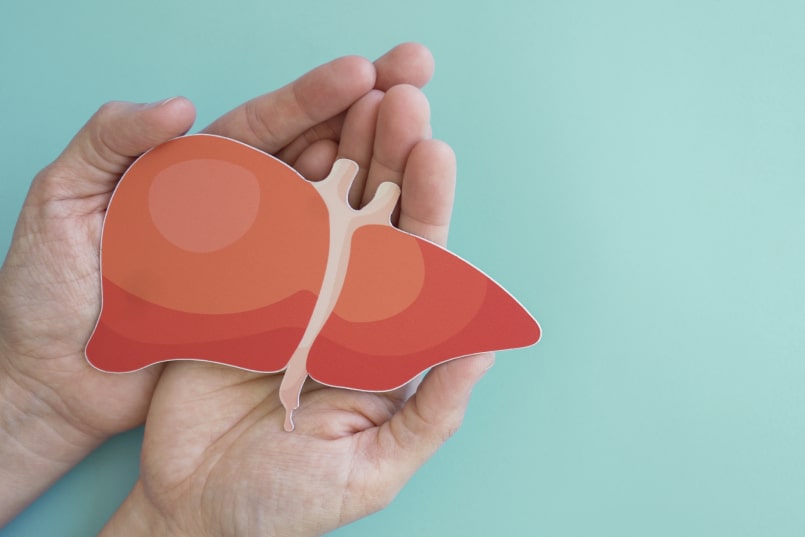24 04 2023
Liver cancer, specifically hepatocellular carcinoma (HCC), is a significant global public health issue due to the increasing number of new cases being diagnosed. According to the International Agency for Research on Cancer’s 2020 data, there were approximately 905,000 new cases of HCC registered worldwide, resulting in 830,000 deaths. This makes it the fourth leading cause of cancer-related deaths worldwide. In Serbia, the number of newly diagnosed cases in 2020 was 996, with 956 deaths. The high number of deaths compared to new cases highlights the severity of this disease and the unfavourable treatment outcomes. It is predicted that by 2025, the number of new HCC cases worldwide will exceed one million. Hepatocellular carcinoma is the most common type of liver cancer, accounting for approximately 90% of liver tumours.
The treatment of HCC is challenging due to the need to address both the underlying liver disease and the malignant tumour, both of which pose potential threats to the patient’s life. A multidisciplinary team of healthcare professionals decides on the most appropriate treatment based on the patient’s individual circumstances and illness, taking a personalized approach. Treatment should be carried out in specialized tertiary centres with access to various treatment modalities and a high volume of patients diagnosed and treated annually.

The treatment of hepatocellular carcinoma depends on the disease stage. The stage is determined based on the patient’s overall health, liver function, and the number and size of tumours, according to the Barcelona classification system.
There are three radical methods of treatment that may offer a potential cure and are typically used in the early stages of the disease. These methods include liver resection, transplantation, and tumour ablation.
Liver transplantation is considered the most effective long-term treatment approach since it removes the tumour and the diseased liver tissue simultaneously. All current international guidelines for cancer treatment recommend using the Milan criteria, which means that transplantation is considered in patients with one tumour up to 5 cm or up to 3 tumour nodes, none of which exceeds 3 cm. However, many countries lack developed transplant programs, and organ donor shortages pose significant challenges. Additionally, tumour progression may occur while waiting for a transplant, rendering the patient ineligible for this intervention.
Tumour ablation is an interventional radiological procedure that uses radiofrequency or microwave energy delivered to the tumour via a needle guided by ultrasound or a scanner. This method destroys the tumour tissue entirely. The best results are seen in the very early stages of the disease, particularly with a single tumour up to 2 cm in diameter.
Liver resection is a treatment intended for patients in the early stages of the disease. Thanks to advances in surgical techniques, intensive treatment after surgery, and appropriate patient selection, a 5-year survival rate of up to 60% can be achieved. The goal of surgical treatment is to remove the tumour entirely and ensure that the remaining liver functions sufficiently for the patient to survive. The liver has a significant regenerative capacity, allowing for up to 60% of the liver’s volume to be removed. If the volume of the remaining liver is insufficient, sophisticated surgical-radiological methods can stimulate hypertrophy of the liver before the operation, enabling surgery on some patients even when it was initially not possible.
Palliative treatment methods are applied to prolong life and improve the quality of life of patients in the advanced stages of the disease. It is estimated that around 70% of patients are diagnosed with an advanced stage when potentially curative treatments are not possible.
Transarterial chemoembolization is a palliative intervention used to treat the intermediate stage of the disease, which includes a larger number of tumour nodes in the liver. This procedure is performed by an interventional radiologist and involves embolization or the blockage of the blood vessel feeding the tumour. Additionally, cytostatic drugs are applied locally in the liver, reducing the systemic toxic effects. This method aims to prolong life and improve the patient’s quality of life.
Systemic targeted therapy is used to treat liver cancer in the metastatic stage of the disease. In the last decade, there has been revolutionary progress in the world of systemic therapy for liver cancer. Unlike in 2009 when Sorafenib was the only available drug, today there are more options for patients with advanced cancer as well as for those with disease progression after initial treatment. There are currently three biological drugs available, namely Sorafenib, Lenvatinib, and Cabozantinib, one monoclonal antibody Ramucirumab, and a drug belonging to immunotherapy – Pembrolizumab. Despite the wider choice, clinicians are still uncertain about which drug to choose. Personalised therapy is becoming increasingly popular as there is a tendency to determine the sensitivity of the tumour to the available drugs before starting treatment, due to the heterogeneity of the tumour and the tumour microenvironment. Unfortunately, unlike some other cancers such as breast cancer, lung cancer, and colon cancer, there are no biomarkers of sensitivity to available therapy for liver cancer that would be applied in clinical practice. A large amount of research is being carried out to that end, with the more popular research analysing potential biomarkers from blood, which is more available compared to tumour tissue from the liver, which requires an invasive procedure – a liver biopsy.